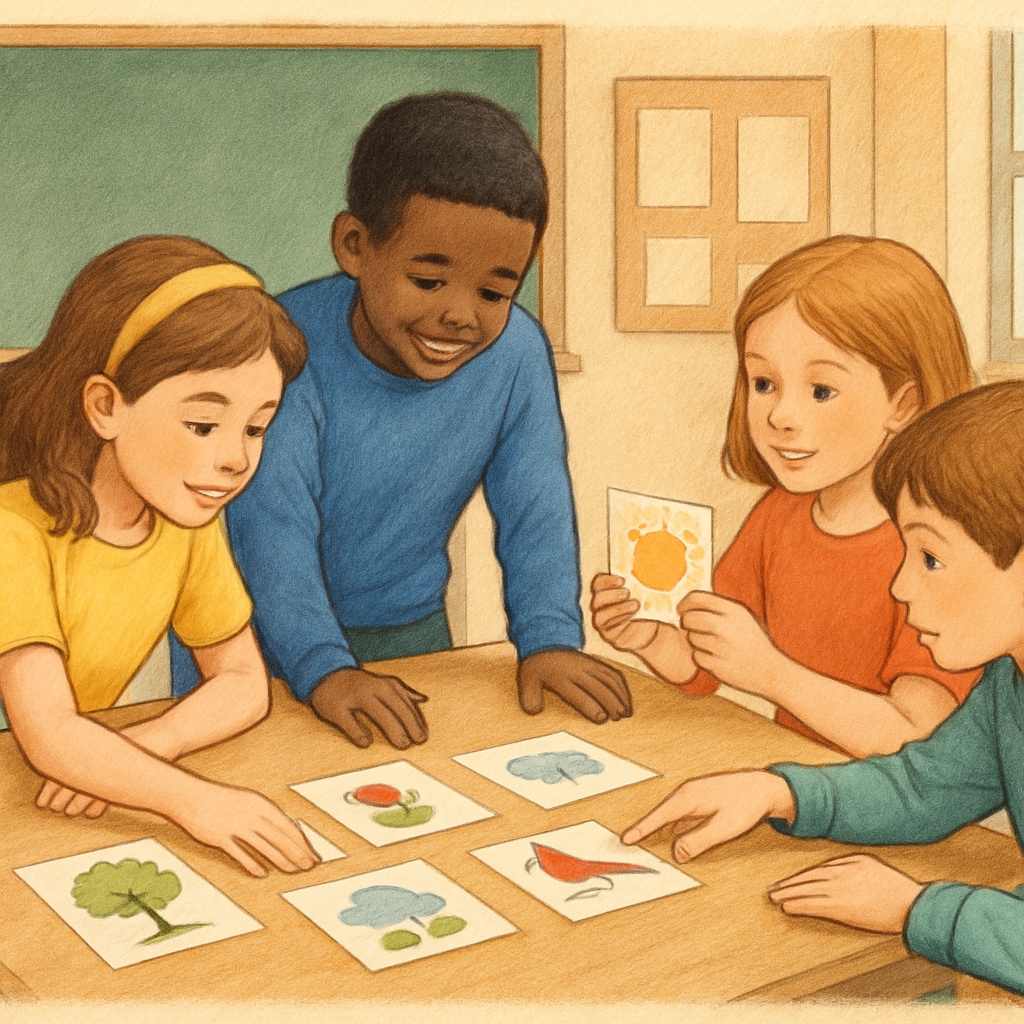Incorporating structured activities like Zoom and ReZoom into K12 classrooms can significantly enhance student engagement and learning outcomes. These activities, which rely on a specific answer order to achieve collective success, promote active participation, critical thinking, and teamwork. In this article, we will explore the educational value of Zoom/ReZoom activities, the importance of maintaining structured interaction, and practical strategies for implementing these tools in modern classroom settings.

Understanding Zoom and ReZoom Activities
Zoom and ReZoom are interactive, team-based activities designed to foster collaboration, communication, and critical thinking. They involve a series of illustrated cards that students must organize in a specific sequence to complete a narrative or visual story. Each student holds one or more cards, and the class must work collectively to determine the correct order. The catch? Students can only describe their cards without showing them, challenging participants to listen, think critically, and communicate effectively.
These activities are particularly popular in K12 education because they address multiple learning objectives, including:
- Encouraging active participation and teamwork
- Improving listening and communication skills
- Promoting logical reasoning and problem-solving
- Creating a fun, engaging learning experience
For educators, Zoom/ReZoom activities also offer the opportunity to teach the importance of structured participation and maintaining order—skills that are invaluable in both academic and real-world settings.
Why Structured Interaction Matters in Education
One of the key components of Zoom/ReZoom activities is their reliance on a predefined answer order. Without proper sequencing, the narrative or visual story falls apart, illustrating the importance of structure in collaborative tasks. This mirrors real-life scenarios, where success often depends on following a logical sequence of steps.
Structured interaction benefits students in several ways:
- Improved Focus: Students must pay close attention to their peers’ contributions to determine the correct sequence.
- Enhanced Teamwork: Success requires collective effort, teaching students to value and trust their teammates.
- Deeper Understanding: By analyzing how individual elements fit into a larger whole, students develop systems-thinking skills.
Additionally, activities like Zoom/ReZoom provide a hands-on, experiential learning opportunity that complements traditional teaching methods. As a result, they help bridge the gap between theoretical knowledge and practical application.

Practical Tips for Implementing Zoom/ReZoom Activities
To maximize the benefits of Zoom/ReZoom activities, educators should consider the following practical tips:
- Prepare in Advance: Ensure that all cards are organized and ready for use. Familiarize yourself with the solution beforehand so you can guide students effectively if needed.
- Set Clear Rules: Explain the activity’s objectives and rules, emphasizing the importance of describing cards without revealing them visually.
- Encourage Participation: Assign roles or rotate turns to ensure that every student has the opportunity to contribute.
- Foster Reflection: After completing the activity, lead a discussion on what went well, what challenges arose, and how the team overcame them. This reflection helps solidify learning and encourages continuous improvement.
- Integrate Technology: For digital classrooms, consider using virtual tools to replicate the activity. For example, digital card sets can be shared via platforms like Google Jamboard or Miro, enabling remote collaboration.
By following these steps, teachers can create a supportive environment where students feel inspired to engage, collaborate, and learn.
Conclusion: The Role of Zoom/ReZoom in Modern Education
Zoom/ReZoom activities represent a powerful teaching tool that combines fun with meaningful learning. By emphasizing structured interaction, these activities teach students critical 21st-century skills such as communication, collaboration, and problem-solving. Whether used in physical or digital classrooms, Zoom/ReZoom activities offer a dynamic way to engage students and foster deeper understanding.
As education continues to adapt to the demands of a rapidly changing world, activities that promote both individual and collective growth will remain essential. By incorporating tools like Zoom/ReZoom into their teaching strategies, educators can inspire students to think critically, work together, and succeed in an interconnected world.
For more on educational theories and practical tools, explore resources on collaborative learning at Wikipedia or systems thinking in education on Britannica.


